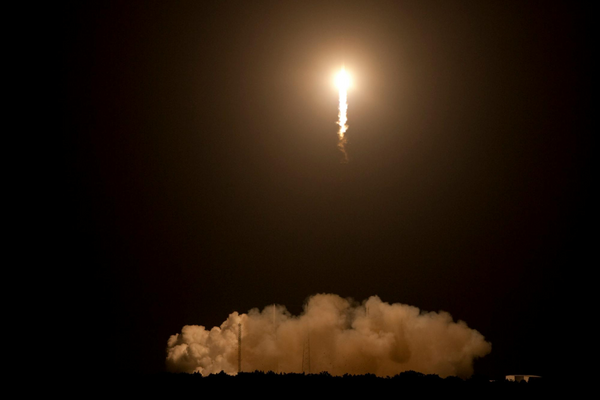
Rare earth elements, often described as “industrial vitamins” of modern technology, are critical to industries ranging from renewable energy and precision manufacturing to national defense. China holds a commanding position in this field, thanks to its dominance in global reserves and a uniquely comprehensive industrial ecosystem.
According to 2023 data from the U.S. Geological Survey, China accounts for the world’s largest proven reserves of rare earth oxides — 44 million tons, or 49% of the global total. More importantly, it is the only nation with a fully integrated supply chain for all 17 rare earth elements, covering everything from mining and processing to refining and advanced applications.
This rare combination of resource abundance and industrial capacity gives China a distinct edge in global technological competition and supply chain security. The industry now stands at a crucial turning point, offering China a strategic opportunity to solidify its influence in key markets.
China’s policy overhaul reshapes global supply chains
Since the formation of China Rare Earth Group Co. Ltd. in 2021, Beijing has moved aggressively to consolidate control over the sector. By 2024, the industry’s concentration ratio (CR10) rose from 62% to 88%, establishing a north-south duopoly: Baotou in the northern province of Inner Mongolia focuses on light rare earths, while Jiangxi province in the south specializes in medium and heavy rare earths.
As well as consolidation, China implemented tighter export controls. Following restrictions on gallium and germanium in 2023, the average export price of praseodymium-neodymium oxide climbed 47% year-on-year. Export quotas for critical minerals such as dysprosium and terbium were slashed by 30% under a zoned, tiered control regime. Still, exports of neodymium iron boron (NdFeB) permanent magnets jumped 28%, underscoring China’s dominance in value-added production.
The regulatory landscape evolved further in 2024. The Rare Earth Management Regulations, effective from October that year, introduced a full-lifecycle traceability system and green standards for mining and recycling. Twelve technical specifications were issued to guide the move from high-volume growth to precision oversight.
Technological innovation is accelerating this change. A pilot project at Jiangxi University of Science and Technology achieved an 85% recovery rate using green leaching technology, a way of extracting metal from ore in an environmentally friendly way. That rate was 20 percentage points higher than traditional methods. Meanwhile, the Bayan Obo mine launched a thorium-based molten salt reactor project expected to process 5,000 tons of radioactive waste annually. From January to September 2024, rare earth recyclers received 2.3 billion yuan ($320 million) in subsidies, pushing recovered magnetic waste above 40,000 tons.
These sweeping reforms are already changing global dynamics. International price premiums for medium-heavy rare earths rose from 15% in 2023 to 38% in 2024. In Malaysia, Lynas — the world’s largest rare earth processor outside China — cut production by 40% due to non-compliant thorium processing, pushing China’s export price of praseodymium-neodymium oxide past 1.1 million yuan per ton. Meanwhile, the European Union’s goal to process 20% of its rare earths domestically by 2030 under the Critical Raw Materials Act remains ambitious, with only three small separation plants currently operating.
U.S. rare earth industry faces key challenges
The U.S. rare earth sector faces significant structural challenges. As of 2024, the U.S. Defense Logistics Agency estimates that current inventories of NdFeB permanent magnets can only support 42 days of wartime demand. Although MP Materials Corp. completed its neodymium praseodymium (NdPr) oxide production line, it still relies on China’s Ganzhou for terbium purification. Tesla’s Gigafactory, in Austin, Texas, was forced to cut the operating rate of its 4680-battery line to 65% due to shortages of magnetic materials.
Supply security and geopolitical risk remain pressing issues. Lockheed Martin is believed to have postponed delivery of its fifth batch of F-35 jets by six months because of dysprosium shortages. Meanwhile, legal challenges from indigenous groups delayed the expansion of the Mountain Pass mine in California, now expected to start production in 2029. The U.S. Department of Energy has poured $1.8 billion into its Rare Earth Initiative, yet only one of five pilot projects has reached the engineering trial phase.
Financial hurdles are also slowing progress. USA Rare Earth saw its net present value drop from $1.2 billion to $370 million amid cost overruns. Urban Mining Co.’s magnet recycling effort, backed by the Department of Energy, faces costs of $85,000 per ton — three times the cost of virgin materials. Tesla’s recycling pilot yielded only 150 tons of magnetic materials per million electric vehicles, far below the annual U.S. demand gap of 2,000 tons.
China’s strategic opportunities
China’s rare earth industry is rapidly moving up the value chain. Baotou-based China Northern Rare Earth (Group) High-tech Co. Ltd. has launched the world’s largest smart manufacturing platform for rare earths, capable of real-time adjustment of 16 elemental compositions. Xiamen Tungsten Co. Ltd. pioneered an integrated “mine-to-motor” production model, raising servo motor profit margins to 41%. From January to October 2024, China’s deep-processed rare earth product exports overtook raw material exports for the first time, making up 57% of total export value.
Innovation and value-added upgrades are accelerating. The “14th Five-Year Plan” allocated more than 12 billion yuan to the rare earth industry.
International cooperation is also expanding. China Rare Earth Group signed a supply deal with Kazakhstan’s Lake Balkhash project, securing access to 200,000 tons of oxides. Meanwhile, ISO/TC298, the rare earth technical committee of the International Organization for Standardization, adopted six magnetic material standards proposed by China, challenging long-held U.S. and Japanese leadership.
Despite its progress, China still faces risks. It still imports a portion of its medium-heavy rare earths from politically unstable Myanmar, raising concerns over supply stability. Emerging technologies such as quantum dots could reduce demand for permanent magnets by up to 15%, according to a 2023 MIT study. Toyota has also debuted a prototype electric vehicle using a heavy rare earth-free motor, accelerating demand for low-dysprosium, low-terbium alternatives.
China’s rare earth sector is undergoing a profound change — from a resource-driven model to one centered on technology and rulemaking. Amid shifting geopolitical tides, China’s strategic advantages in policy coordination, industrial capacity and innovation position it to play an increasingly central role in global high-tech supply chains. With plans for international recycling centers and expanding global partnerships, China is aiming not just for dominance, but for long-term leadership in the rare earth economy.
Fu Xiaofang is a senior engineer at the Sichuan Provincial Institute of Comprehensive Geological Survey and chief expert of the Sichuan Provincial Key Laboratory for Strategic Rare and Rare Earth Resources Evaluation and Utilization
This commentary has been edited for length and clarity
Contact editor Han Wei (weihan@caixin.com)
The views expressed in third-party articles are those of the authors and do not necessarily reflect the positions of Caixin







